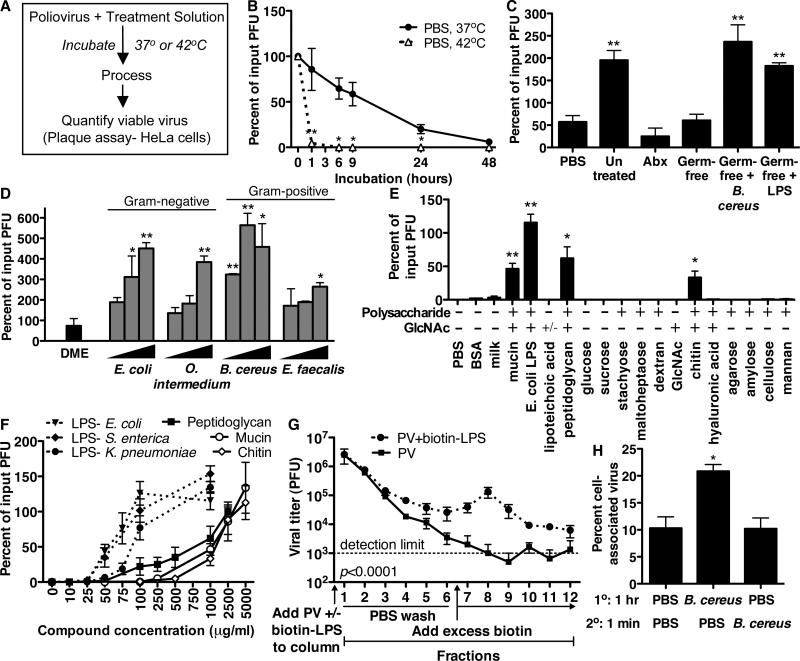Figure 4.
Effects of bacteria and polysaccharides on poliovirus. (A) Strategy for in vitro poliovirus infectivity experiments. (B) Poliovirus recovered after incubation in PBS. (C) Poliovirus infectivity following exposure to PBS, feces, or feces supplemented with Bacillus cereus or lipopolysaccharide (LPS) (6 hours/37°C). (D) Poliovirus infectivity after exposure to medium (DME) or bacterial strains (107, 108, or 109 CFU) (6 hours/37°C). (E) Poliovirus infectivity after incubation with compounds (1 mg/ml) (6 hours/42°C). (F) Poliovirus infectivity after incubation with various concentrations of compounds (6 hours/42°C). (G) Poliovirus binding to LPS. Poliovirus was incubated +/- biotinylated LPS for 1 hour at 37°C. A monomeric avidin column was loaded with samples and washed with PBS to collect fractions 1-6. Excess biotin was added to elute (fractions 7-12). Poliovirus was quantified yielding PFU per fraction, p<0.0001, 2-way ANOVA. (H) Binding of radiolabeled poliovirus to HeLa cells. 35S-labeled poliovirus was incubated with PBS or 108 CFU B. cereus for 1 hour at 37°C. An equal volume of PBS or B. cereus was added followed by immediate incubation with HeLa cells. After washing, cell-associated radioactivity was quantified. For all experiments, N=2-8 and bars and symbols denote mean + SEM, *p<0.05, **p<0.01, Student's t-test.

